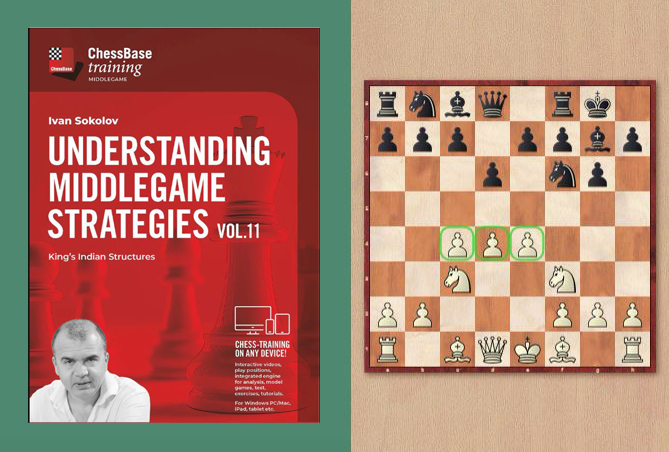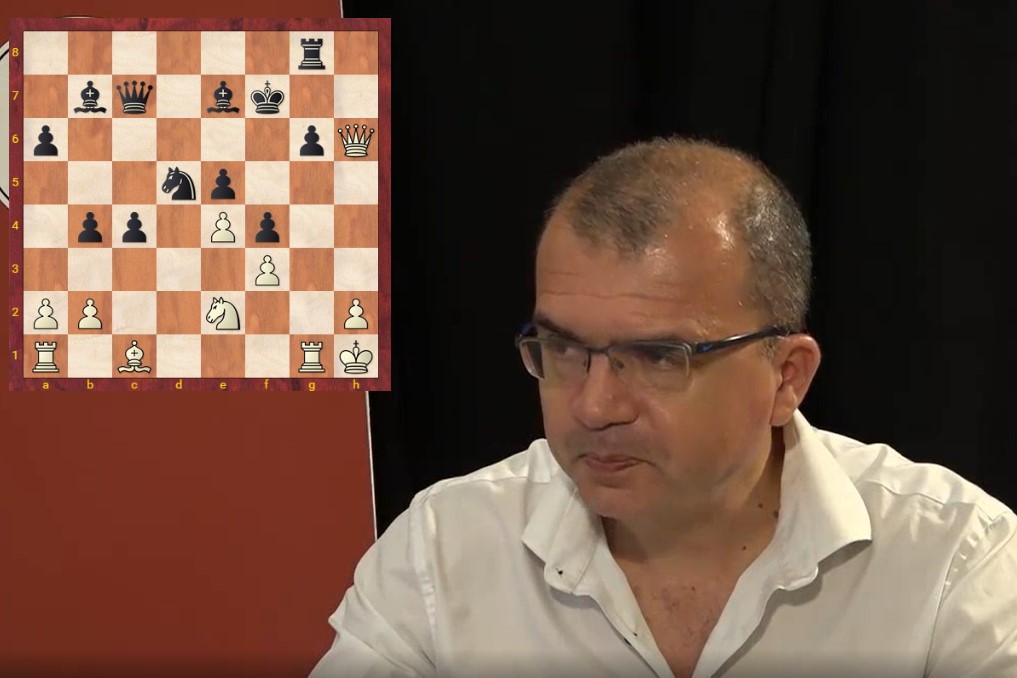


"Understanding Middlegame Strategies Vol.11 - King's Indian Structures" provides a comprehensive understanding of positions that can arise from the King's Indian Defence. In this series, the Dutch-based star trainer Ivan Sokolov focuses on positions with a pawn centre featuring e4, d4 and c4, leaving out fianchetto setups.
Although Sokolov demonstrates opening moves in his videos, this is not an opening compendium. Instead, he illustrates, through a surprising number of variations from recent games, how different middlegames can develop. Sokolov has decades of experience with this opening: he has successfully played the King's Indian with both colours. In this video series, he shares insights from his games against top players and highlights many games by other world-class players.
The series is far from short on variety, as not only legends like Mikhail Tal, Bobby Fischer and Garry Kasparov were experts in this field. Today, players such as Richard Rapport, Dommaraju Gukesh, and Germany's top player, Vincent Keymer, often rely on this sharp weapon, which frequently leads to highly complex tactical and strategically demanding positions.
Free video sample: Introduction
The King's Indian Defence offers a fascinating arena for dramatic twists, where either side can seize control. This dynamic opening allows no room for error, but those who understand its central ideas can skilfully exploit the opponent's weaknesses. Sokolov's analyses go far beyond typical engine evaluations. On the contrary, he repeatedly emphasises how worthless a fractional pawn advantage is if the position is not understood and the advantage cannot be utilised. Even with analytical variations in front of you, it is often very challenging to choose between several well-rated moves. However, with the correct strategy, such decisions become much easier. This is precisely where the author focuses, teaching what is important in these positions.
The most critical strategic principles of the King's Indian Defence are vividly explained, ranging from converting small positional advantages to decisive tactical turns. Examples from the author's practice bring the theory to life and demonstrate how to tackle the challenges of this opening. The course bridges the gap between theoretical knowledge and its successful application in one's own games.
The course provides an in-depth analysis of main lines for White, including 5.Nf3, 5.Bd3, 5.Be2 and 5.h3, while also delivering a balanced understanding of strategic plans for both sides. Special attention is given to the intriguing differences between human decision-making and machine evaluation, showing how this knowledge can be practically applied.
A typical example of Ivan Sokolov's meticulous approach: He spends nearly 20 minutes dissecting a line involving a central pawn exchange on d4.
The author follows a consistent structure, briefly outlined here with Chapter 2.2. Sokolov analyses the game Rasmussen vs Nisipeanu in detail, referencing several related games. He then works backwards from the end of the game to key turning points, explaining when and why Nisipeanu gave up his pair of bishops and weakened the pawn on d6 earlier. He shows that Black's strategy revolves around targeting White's bishop on f3, even at the cost of a pawn. This makes Black's knights strong, while White's bishop on f3 is blocked by its own pawns. Understanding this reveals the strategy behind the position!
After discussing several other games on this central exchange, Sokolov concludes the second chapter with examples from his own practice: his victories with white against Kozul and Gelfand.
Even an expert like Kasparov could be defeated with the correct strategy, as Kramnik demonstrates here. --> Free video sample: Chapter 3
Later in Chapter 3, Sokolov explores the modern delayed castling strategy. Players like Rapport and the younger Royal and Lagarde, along with World Championship challenger Gukesh, have experimented with this daring approach.
Narayanan-Gukesh: It is omforting to know that even the best occasionally choose incorrect plans – Gukesh played 10…Nh7? in this intriguing position and lost the game.
Chapter 4 concludes with five victories by Sokolov as white, including a convincing win against then women's world champion Xie Jun. For those who find this too White-centric, Sokolov provides an extensive collection of model games with victories for both sides across various lines, employing various strategies.
The transition to Benoni structures is also possible, but against Radjabov, Sokolov chose otherwise and explains in detail why the depicted White position is already practically winning
Modern engines, particularly regarding the King's Indian Defence, are "overly optimistic" for White, according to Ivan Sokolov. Computer evaluations often assess White's position more favourably than it deserves, which is usually meaningless in human games. It is often worthwhile for Black to "look behind the scenes". Who better to do this than a top trainer and former world-class player like Sokolov? He has played the King's Indian for decades with both colours but also considers modern approaches with a "complete centre", such as setups with 5.a3 or and early g2-g4. The series provides a remarkable understanding of middlegame positions from this ever-dynamic opening for both sides.
Through the extensive material, twelve practical exercises against Fritz online and eight tasks, students learn step by step how to assess pawn structures and execute active piece play on the correct flank.
An ideal course for anyone looking to improve their understanding of chess, reduce mistakes and develop a successful strategy. Sokolov teaches typical plans for common positions in the King's Indian Defence, helping players aim for a new level.
Video runtime: 5 hours 38 minutes
 Ivan Sokolov (photo by Lennart Ootes) was born on 13 June 1968 in Jajce, Bosnia (then part of Yugoslavia). He learned chess from his strong-playing father at the age of six, gaining early access to chess literature. He became a FIDE Master in 1985, an International Master in 1986 and a Grandmaster in 1987 – at the time, the fifth youngest ever after Tal, Fischer, Spassky and Kasparov.
Ivan Sokolov (photo by Lennart Ootes) was born on 13 June 1968 in Jajce, Bosnia (then part of Yugoslavia). He learned chess from his strong-playing father at the age of six, gaining early access to chess literature. He became a FIDE Master in 1985, an International Master in 1986 and a Grandmaster in 1987 – at the time, the fifth youngest ever after Tal, Fischer, Spassky and Kasparov.
Sokolov went into exile in the Netherlands during the Yugoslav civil war in 1993, where he won the national championship in 1995 and 1998. He is married to a Dutch woman. In 2003, he was named Dutch Player of the Year. From 2018 to 2022, he served as Vice-President of the European Chess Union. In 2022, Sokolov coached the Uzbekistan team to victory at the Chess Olympiad
| Advertising |